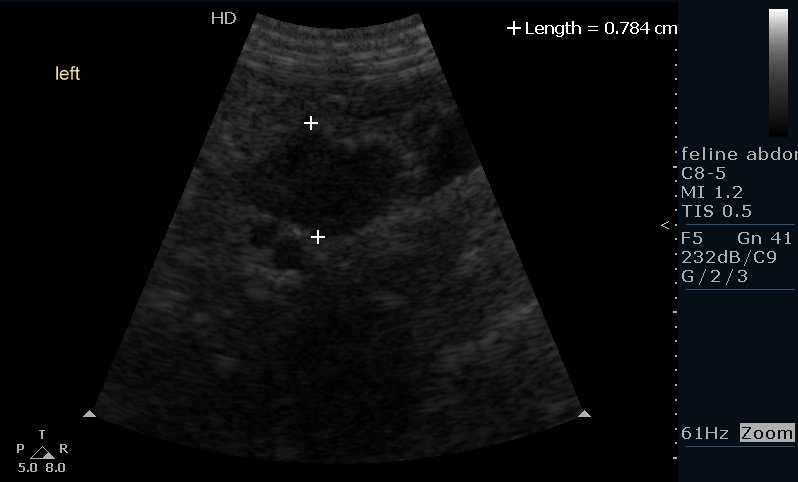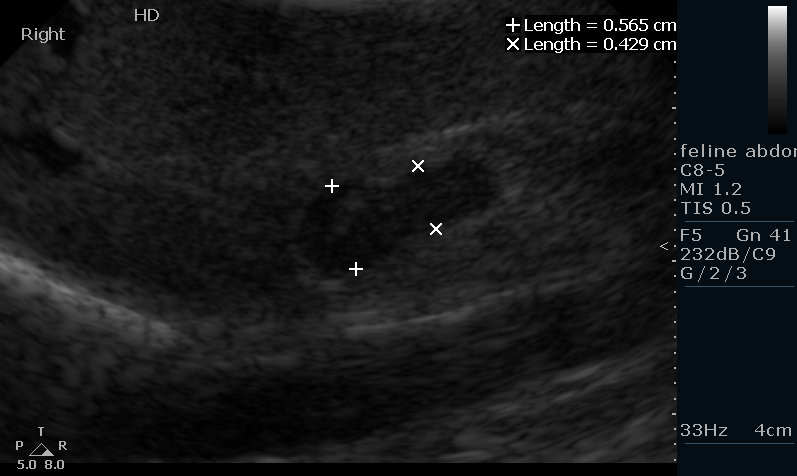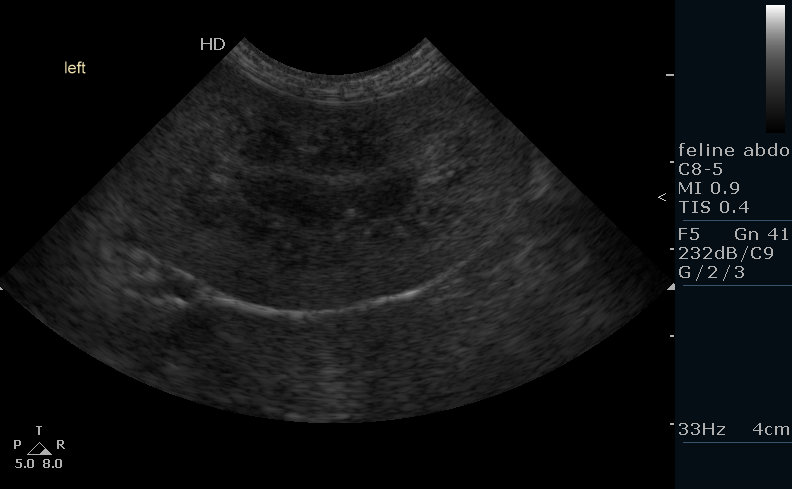Feline hyperaldosteronism
Hyperaldosteronism in cats has the potential to cause hypernatraemia (and hence systemic hypertension -often manifesting as ocular bleeds and retinal detachments) and/or hypokalaemia (muscle weakness). It’s not all that common but it’s a nice diagnosis to make because treatment can really make a difference.
The conventional cause is functional adenoma or carcinoma of one adrenal gland -and surgical removal is an option in these cases. So when we saw this little old cat with very low potassium (like unable-to-stand low) we performed an abdominal echo to see what was going on in there.
So, that’s his left adrenal and there it is! Approximately 5mm diameter is about the top end of ‘normal’ for cats. Not only is this adrenal very large; it’s also irregular.
Ok, so what about the right one? Well, to be honest, that’s not completely normal either. Cat adrenals are usually pretty much ovoid and homogeneous. This one is a bit irregular and it has hyperechoic patchy bits in the parenchyma.
Also to be taken into consideration is the fact that many chronic medical conditions of older cats have the potential to cause adrenomegaly (think hyperthyroidism, hyperadrenocorticism, miscellaneous chronic stresses).
We checked his aldosterone levels (sky high) and confirmed that his renin levels were OK (so, inappropriate aldosterone secretion) and did what we could to rule out concurrent problems. Difficult decision time! Do we remove the bigger gland and gamble that it’s causing the problem?
In the end we decided against. Once he had been stabilised, we treated him with spironolactone (as aldosterone antagonist) and potassium supplementation. In his particular case we never experienced hypernatraemia or hypertension issues. And he was fine for several months. Ultimately however, he developed intractable kidney disease with these really abnormal-appearing kidneys:
Ultimately we did, sadly, lose him. Histopathologically he had bilateral adrenal hyperplasia. This is a poorly-understood condition with few reported cases -but the decision not to operate was a good one. High aldosterone causes a progressive glomerulosclerosis despite control of other aspects of the disease and it’s the kidney disease which ultimately catches up with them.








